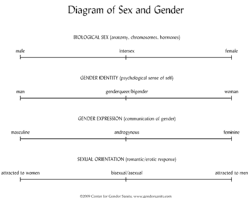FHWorld17: Confronting Homophobia & Transphobia
Why are so many firefighters afraid to talk about homophobia or transphobia? In her Wednesday Firehouse World session, Jona Olsson—who recently retired as fire/EMS chief with the Latir, NM, Volunteer Fire Department—addressed key issues and stereotypes related to the lesbian/gay/bisexual/transgender (LGBT) community.
Olsson founded cultural bridges to justice (cbtj) in 1986 to provide anti-oppression and social justice workshops, keynotes and consulting for not-for-profit organizations and communities. Speaking at conferences like Firehouse World combines her two passions—the fire service and social justice.
Despite her impressive fire service résumé, Olsson said that when people learn she is a lesbian, some choose to identify her as only that, discrediting her other accomplishments and affiliations. Some will make gross generalizations about who she is and what defines her.
“It takes a toll,” she said. “That toll means I can’t do my 110 percent.” And those who are spending time judging her also can’t perform at their 110 percent, she said. In the end, it comes back to what’s best for the overall mission of serving our communities, which is why it’s important to eliminate the misinformation and dispel the myths about the LGBT community.
Olsson underscored that trust is critical. “The fire service is based on trust, so how can I trust you with my life if I can’t even tell you who I am?” And this extends into how we help our responders manage traumatic incidents. If a gay firefighter responds to a hate crime at a gay club, for example, the response could take a greater toll and increase the likelihood of PTSD. We need to have an open and positive dialogue where members feel that they can trust their team enough to share their experiences and emotions related to their responses, she said.
Olsson opened a dialogue with attendees, encouraging them to ask questions about LGBT issues. Key to the discussion, she said, is understanding the distinctions among these aspects of being a human being:
- Biological sex (male, female, intersex)
- Gender identity (e.g., man, woman)
- Gender expression (e.g., masculine, feminine, androgynous)
- Sexual orientation (e.g., attracted to men, attracted to women, attracted to both, attracted to neither)
Problems can arise when people confuse these distinctions and even lump them together, Olsson said. And when people don’t fall into the “expected” categories (e.g., a man, who identifies as a man, acts masculine and is attracted to women), it can challenge people in a way that leads to judgments and stereotypes. (A fuller discussion of these definitions, as well as a matrix to illustrate the differences, can be found at http://gendersanity.com/diagram.html.)
Olsson then went through a series of stereotypes about members of the LGBT community, busting myths and answering questions. A common myth is that people can choose their sexual orientation. But Olsson reminded that the only “choice” for people is whether to live their lives as themselves or to live their lives as a lie. It’s like handedness. If you are born left-handed, you can tie your arm behind your back and force yourself to use your right hand—but you will always be left-handed. It’s biological.
The key to handling any sensitive topic like this is open communication. Departments will have to deal with issues like bathrooms at the stations, and the first step is opening a dialogue. “Just changing the name of the room isn’t going to solve anything until we talk about it,” she said.
She noted that she believes that change is going to come at the company officer level. “This is an attitudinal change,” she said. “Talk to each other; talk to your friends.” And speak up when you witness homophobic or transphobic behavior.
About the Author

Janelle Foskett
Janelle Foskett served as editorial director of Firehouse Magazine and Firehouse.com, overseeing the editorial operations for the print edition along with working closely with the Web team.
